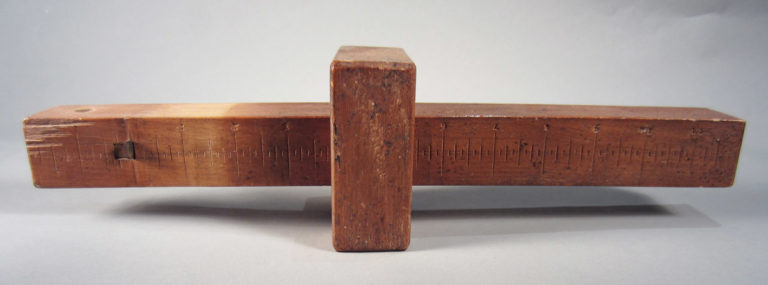Gauge
Large quantities of turned woodwork were produced on the two lathes in the Dominy shop. To measure the accuracy of the turning and to insure some degree of uniformity for similar wood products, these craftsmen made gauges.
(Below) Gauge, Dominy Family (maker), 1780-1820. Wood. 8.2." (L). Museum purchase with funds provided by Henry Belin du Pont, 1957.0026.352

Types of gauges included the cutting gauge (right), used for such tasks as cutting veneers and thin wood such as the large number of drawer bottoms needed in case furniture.
Cutting gauge, Nathaniel Dominy IV (maker), 1794. Beech, American; Dogwood; Iron. 14" (L). Marks: Stamped in block letters "ND" conjoined in a square; Incised "1794." Museum purchase, 1957.0093.051.

A mortising gauge (right) had a pair of pins, often used to scribe fixed pairs of lines from a straight edge or molded surface to mark the width of mortises and tenons.
Mortising gauge, 1800-1825. Wood; Iron. 10" (L), 2.5" (W). Museum purchase with funds provided by Henry Belin du Pont, 1957.0026.029

A marking gauge (left) was an indispensable tool for cabinetmakers, carpenters, and most other woodworkers. Marking gauges have one marking pin, used to transfer a measurement from one board to another with a straight edge. Such a tool enabled a cabinetmaker to insure the correct depth of cut for dovetails.
Marking gauge, Nathaniel Dominy V (make), 1790-1825. Wood; Iron. 12" (L). Museum purchase with funds provided by Henry Belin du Pont, 1957.0026.030

